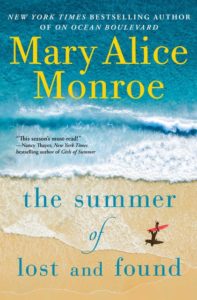My mission as an author is to help readers become aware of issues facing endangered species through the craft of creating story worlds that identify important parallels between nature and human nature. That seems straightforward if you’re writing non-fiction, but how do you pull that off well as a fiction writer?
Our job as writers is to create an authentic story world through characters, plot, and themes. And to do that successfully, the writer must always remember that the bedrock of your story world is setting. It is the guidepost for me when I’m developing my characters, plot, and even dialogue. Setting plays a pivotal role because when done correctly, it will enhance the storyline, characters, themes and even mood of a novel.
For the last twenty years, I made a conscious decision to use my books as a force for good by helping readers become aware of the issues facing endangered species, and more importantly, to inspire them to care about those issues. My latest novel, The Summer of Lost and Found, which is the seventh installment of the bestselling Beach House series, is entirely inspired by the life cycle of the endangered loggerhead sea turtle.
Readers love the family saga of the Rutledge family set against the backdrop of the turtle nesting seasons. But whether it’s writing for adults or for children, I don’t start writing a book with a character in mind or a main story idea. For me, the inspiration comes from what’s affecting the wildlife and landscape around me in coastal South Carolina. That’s where I begin my stories. The local flora and fauna, and the myriad details of the locations and people in the setting are all paramount to developing an authentic story world.
Linnea searched the natural landscape, and as she did, it dawned on her that she had to see the outdoors with new eyes – – with the eyes of a child – – filled with awe and wonder. Her eyes swept the nooks and crannies along the base of the house. Where was an anole? A green tree frog?
For my work in environmental fiction, academic and hands-on research are my modus operandi when preparing to write a story. I spend hours upon hours of interviews and working with animals to better understand a species and the people who work with them, or work in a specific environment. There is so much to glean from rolling up one’s sleeves to get dirty, so to speak.
She knew that their shared passion for marine life was one of the bond that united them. “Well,” he began, collecting his thoughts. “We’re trying to follow up on last year‘s study…”
She listened closely. The previous summer, Gordon had come to Charlestown to continue research on the landmark study he participated in along the Cornish coast. They had examined 50 animals, from 10 species of dolphins seals and whales, and found microplastics in them all.
“We need to know how the fish are getting the microplastics,” he said. “Is it directly from the water or from their prey? This would mean that the plastics are transferred through the food chain.”
“If the fish eat the plastics and we eat the fish…”
“That’s right,” he confirmed. “We’ve documented that even the deepest dwelling marine organisms have plastics and their stomachs.”
I’m learning not only about a species or an issue, but I’m seeing the setting through the eyes of various characters, as well. This dirty work helps me build a more personal story world. Without this time to work and observe and learn, the setting I choose would feel bland and sound like a generic travel description.
Staying attentive to the setting of your story, can bring readers –adults or children– into a world where they not merely learn about a wild species or important issue in nature—but they come to care about the world of which they learned through your book. That is the satisfying, positive power of storytelling.
Like everything else, the turtle team schedule and duties had changed because of the pandemic. The Department of Natural Resources permitted only two team members to work at a nest to maintain social distancing Linnea missed the camaraderie she usually felt with her teammates each morning, the gatherings for coffee at Emmi’s or Cara’s house.
When I sit down to plot and write, the species I’ve learned about through listening, observing, studying, and working, gives me the backdrop I need to craft my storyline. My goal is not to overwhelm the reader with facts, or to proselytize. My intent is to create a fully developed story world delicately guided by the flora or fauna of my setting that fascinates me.
She searched the three shrubs for a birds’ nest. A flash of red in the sky drew her attention to the live oak tree and Emmi’s yard. A cardinal! They nested here as early as March. She heard the high-pitched calls, which sounded like the male was saying kiss me, kiss me.
Ultimately, the reader should feel that sense of satisfaction we all love after finishing a great book. That feeling that keeps bringing your mind back to that fictional story. Behind that initial wave of satisfaction is a feeling of surprise and enjoyment that you learned something about the wild.
She knew she’d still be afraid of failure. That she was flawed, and would make many more mistakes. But it was their individual examples of day-to-day bravery that encouraged her to keep trying, not to give up, to be authentic. To be like the turtle and follow her instincts.
My mantra for environmental fiction writing is: Once you know, you care, and then you take care. Combining my passion for coastal conservation with my ability to create compelling stories is the best way I know to create positive change in our world. I want readers to know and love the animals in my stories just as much as I do. As writers, we have the power to inspire positive change through our skills as a writer combined with our passions and interests.
How do you work the environment–or whatever your passion–into your fiction? Let’s talk about it on the Career Authors Facebook page.
 Mary Alice Monroe is The New York Times bestselling author of 27 books. More than 7.5 million copies of her books have been published worldwide and she is known for writing compelling
Mary Alice Monroe is The New York Times bestselling author of 27 books. More than 7.5 million copies of her books have been published worldwide and she is known for writing compelling environmental fiction. A passionate conservationist, Mary Alice has won numerous awards including the prestigious Southern Prize for Fiction, several Readers Choice awards, and was recently named a South Carolina Academy of Authors 2018 Literary Hall of Fame inductee. She is the co-creator/co-host of the new literary sensation “Friends & Fiction,” a hit weekly web show and podcast. In addition to her latest adult book, The Summer of Lost and Found (May 2021), she makes her middle-grade author debut with The Islanders in June 2021. www.maryalicemonroe.com
environmental fiction. A passionate conservationist, Mary Alice has won numerous awards including the prestigious Southern Prize for Fiction, several Readers Choice awards, and was recently named a South Carolina Academy of Authors 2018 Literary Hall of Fame inductee. She is the co-creator/co-host of the new literary sensation “Friends & Fiction,” a hit weekly web show and podcast. In addition to her latest adult book, The Summer of Lost and Found (May 2021), she makes her middle-grade author debut with The Islanders in June 2021. www.maryalicemonroe.com
*all excerpts above from The Summer of Lost and Found, courtesy Mary Alice Monroe





